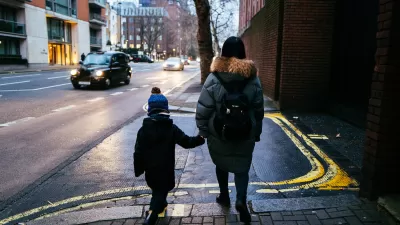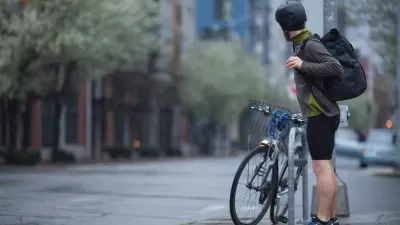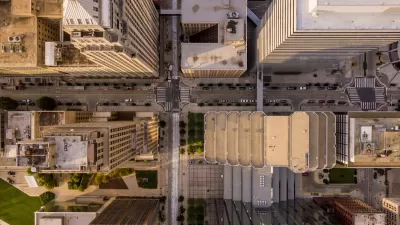With many states witnessing a rise in pedestrian fatalities, David M Nelson asks: "Where is the public outcry to improve safety?" With pedestrians often blamed for such incidents, he argues new laws dealing with pedestrian-vehicle crashes are needed.
Why is it that defensless pedestrians are often the first to be blamed for collisions with vehicles? As Nelson explains, this hasn't always been the case. "In the early 1900s, cars and their drivers were depicted in editorials, cartoons and accident reports as reckless murderers....What changed, mid-century, was that the highway lobby essentially took over the reporting of pedestrian and cyclists harmed by drivers; unsurprisingly, they changed the voice of coverage to presume the innocence of drivers."
Nelson spreads the blame to the American legal system which includes "few laws motivate law enforcement to consider killing a pedestrian as a crime."
Lastly, he points a finger at the media for their portrayal of such incidents. "First and foremost, underlying all of the poor media coverage is what I call the 'Accident Axiom.' This is the widely-held (but almost never-question) belief that accidents are an unavoidable and innocent consequence of modern motorized society. The assumption here is that crashes not involving excessive speed, alcohol, or gross negligence are presumably the fault of no one, but an unfortunate systemic fluke."
"This axiom has two corollaries: the Inherent Risk Corollary and the Reckless Driver Corollary. The former states that in this world of unavoidable accidents, pedestrians and cyclists are senselessly putting themselves in harm’s way by traversing concrete and asphalt. If they get hit, it is a deserved consequence of their poor decision making. And the latter states that those rare instances when a driver is at fault, it is the result of that driver being a reckless and careless individual, a deviant member of society. All blame is attributed to the individuals involved. The road network and driving culture are given immunity."
Solutions to this conundrum include: getting a Vulnerable Users Law introduced into your state legislature, lowering the speed of traffic, and convincing media outlets to change the way they report on pedestrian deaths.
FULL STORY: Walking is Not a Crime: Questioning the Accident Axiom

Planetizen Federal Action Tracker
A weekly monitor of how Trump’s orders and actions are impacting planners and planning in America.

Maui's Vacation Rental Debate Turns Ugly
Verbal attacks, misinformation campaigns and fistfights plague a high-stakes debate to convert thousands of vacation rentals into long-term housing.

San Francisco Suspends Traffic Calming Amidst Record Deaths
Citing “a challenging fiscal landscape,” the city will cease the program on the heels of 42 traffic deaths, including 24 pedestrians.

Amtrak Rolls Out New Orleans to Alabama “Mardi Gras” Train
The new service will operate morning and evening departures between Mobile and New Orleans.

The Subversive Car-Free Guide to Trump's Great American Road Trip
Car-free ways to access Chicagoland’s best tourist attractions.

San Antonio and Austin are Fusing Into one Massive Megaregion
The region spanning the two central Texas cities is growing fast, posing challenges for local infrastructure and water supplies.
Urban Design for Planners 1: Software Tools
This six-course series explores essential urban design concepts using open source software and equips planners with the tools they need to participate fully in the urban design process.
Planning for Universal Design
Learn the tools for implementing Universal Design in planning regulations.
Heyer Gruel & Associates PA
JM Goldson LLC
Custer County Colorado
City of Camden Redevelopment Agency
City of Astoria
Transportation Research & Education Center (TREC) at Portland State University
Jefferson Parish Government
Camden Redevelopment Agency
City of Claremont





























